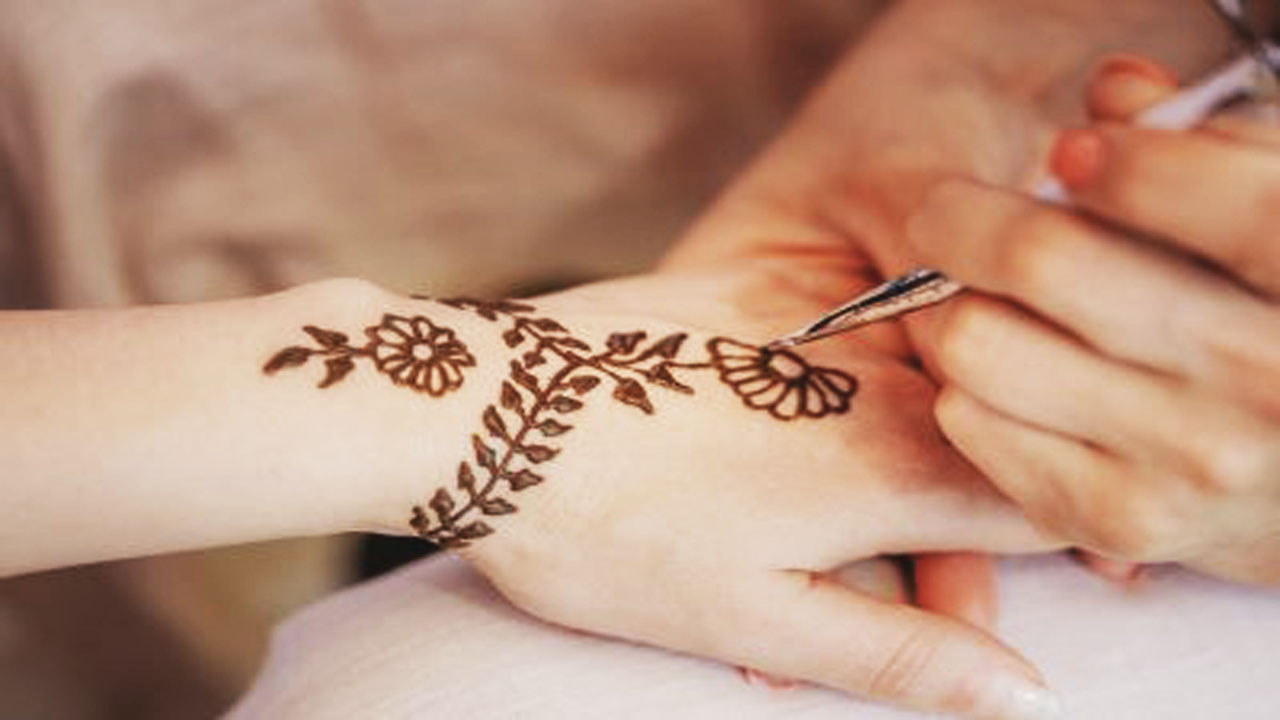Henna!
What is henna?
Henna is a dye of plant origin obtained from the dried leaves of a fragrant plant.
Henna is a dye of plant origin obtained from the dried leaves of a fragrant plant (Lawsonia inermis, belonging to the family Lythraceae), mainly from the Indian subcontinent and North Africa.
It has been used for thousands of years for hair coloring and body painting. The molecule extracted from the leaves is marketed as a powder to be prepared in paste form.
Henna tattoos are also temporary tattoos: the pigments are applied to the skin and disappear after a few weeks.
Three types of henna are offered today:
- the "natural" henna, from Lawsonia inermis ;
- the "neutral" henna, from Cassia obovata, a plant of the Cesalpiniaceae family;
- black henna, from Indigofera tinctorium, of the Fabaceae family.
How do you get a henna tattoo?
It is quite possible to offer you a henna tattoo... homemade! Of course, in the beginning, the line will be hesitant, but with a little practice, your drawings will be more and more beautiful. Choice of henna, technique, tips: we tell you everything!
1)Henna Tattoo: With which henna?
No, henna is not only used to naturally color hair. The beautiful tattoos of Middle Eastern women are made with henna. If you want to do such a tattoo at home, be sure to choose your henna carefully in the store. You can either choose a ready-made henna paste or buy natural henna powder and mix it yourself. There are also ready-to-use henna tattoo cones available, which make it easy to use, especially for novices! If you choose to mix your own, mix 2 teaspoons of natural henna powder, 1 teaspoon of lemon juice, 0.5 teaspoons of powdered sugar, a few drops of essential oils, or rose floral water. The henna paste should be left to rest in an airtight container for about half a day. If you don't have a henna cone or a fine syringe, you can then fill a small freezer bag with henna paste, and cut a tiny corner to use as a pocket - just like in a pastry shop!
2)How to draw your henna tattoo?
The advantage of a henna tattoo is that it doesn't last long - that's what makes it a beauty miracle product too! So, for your first attempts, if you have the hesitant, trembling line, it's okay, it won't last. You can get inspiration from patterns found on the internet, from books on the subject in bookshops, from drawings seen in magazines, but you can also practice with simpler figures - it is not obligatory to do a henna tattoo with Andalusian arabesques! Ideally, practice first on a sheet of paper, several times, and then hop! go to your skin. It is necessary, once the design is finished, to wait for at least 4 hours with the paste on your skin - don't plan to go out in the meantime! Once the henna paste has dried, it hardens and then cracks and... tadam! The tattoo appears underneath.
3)How to prolong a henna tattoo?
What are the risks of henna tattoo?
The risk of allergy to traditional henna is minimal. However, many cases of severe contact allergy have been reported as a result of black henna tattoos. The allergy usually manifests itself as a rash of papules and blisters accompanied by itching on the tattoo; sometimes general signs (fever).
Allergic skin reactions such as eczema can occur within 48 to 72 hours, but also within 7 to 15 days after the tattoo has been applied. They can cause inflammatory reactions and leave permanent scars. The allergy can permanently mark the skin with scars or pigmentation disorders.
These allergies are mainly due to paraphenylenediamine or phenylenediamine (PPD), an illegal substance in France, added to natural henna to obtain a black tattoo (natural henna gives a brown color).
These manifestations may reappear upon re-contact with a product containing the molecule in question, such as hair dyes because the sensitization to the substance causing the allergy is permanent.
Cases of violent reactions requiring urgent medical intervention or even hospitalization have also been reported by the AFFSAPS (French Health Products Safety Agency).
To avoid the risk of allergy, it is recommended not to be tattooed if the tattooist proposes:
- a "natural black henna" tattoo: since natural henna has a brown color, chemical ingredients will probably have been added to it, among which may be paraphenylenediamine (or phenylenediamine) or other allergenic substances;
- a henna tattoo with a fast drying time: a natural henna tattoo requires a minimum of 1 hour drying time;
- a henna tattoo with a lifespan of more than 3 weeks. A natural henna tattoo rarely remains "indelible" for more than 2 weeks. It will then gradually lighten and fade.








No comments:
Post a Comment